Environmental Crisis: Industrialization, Resources, and Sustainability
VerifiedAdded on 2022/11/23
|5
|802
|253
Discussion Board Post
AI Summary
This discussion post addresses the environmental crisis, emphasizing the negative impacts of industrialization and the consumption of fossil fuels, particularly in countries like China. It highlights the degradation of the environment and the need for sustainable practices. The post explores the role of developed nations in driving innovation and investment in clean energy, as well as the importance of enforcing environmental laws. It also examines the scarcity of non-renewable resources such as water, coal, oil, and natural gas. The post then outlines three sustainability models: the 3-legged stool model, the 3-overlapping circles model, and the 3-nested dependencies model, which are crucial for addressing environmental challenges and ensuring a balanced approach to economic, environmental, and social factors. References to relevant academic sources are also included.
1 out of 5
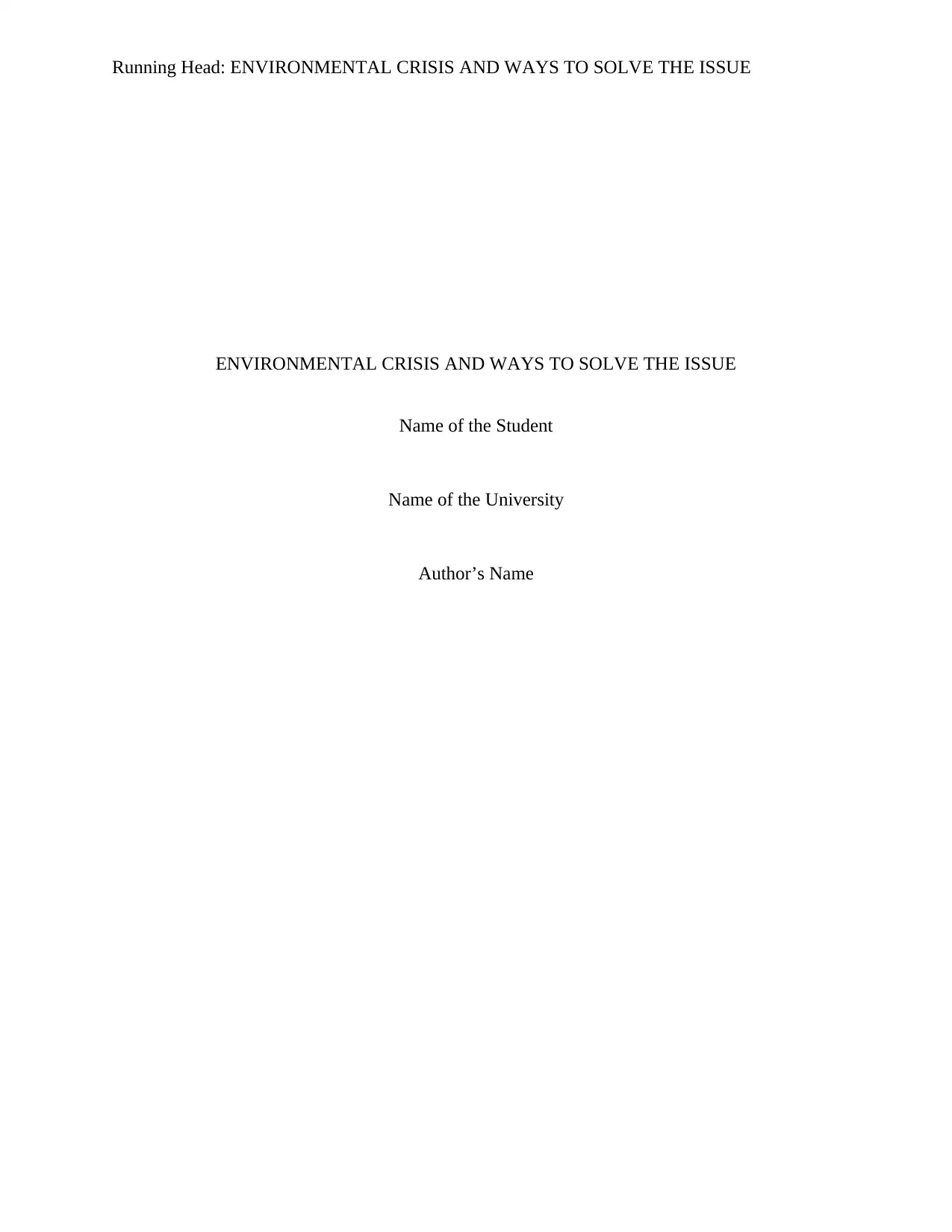
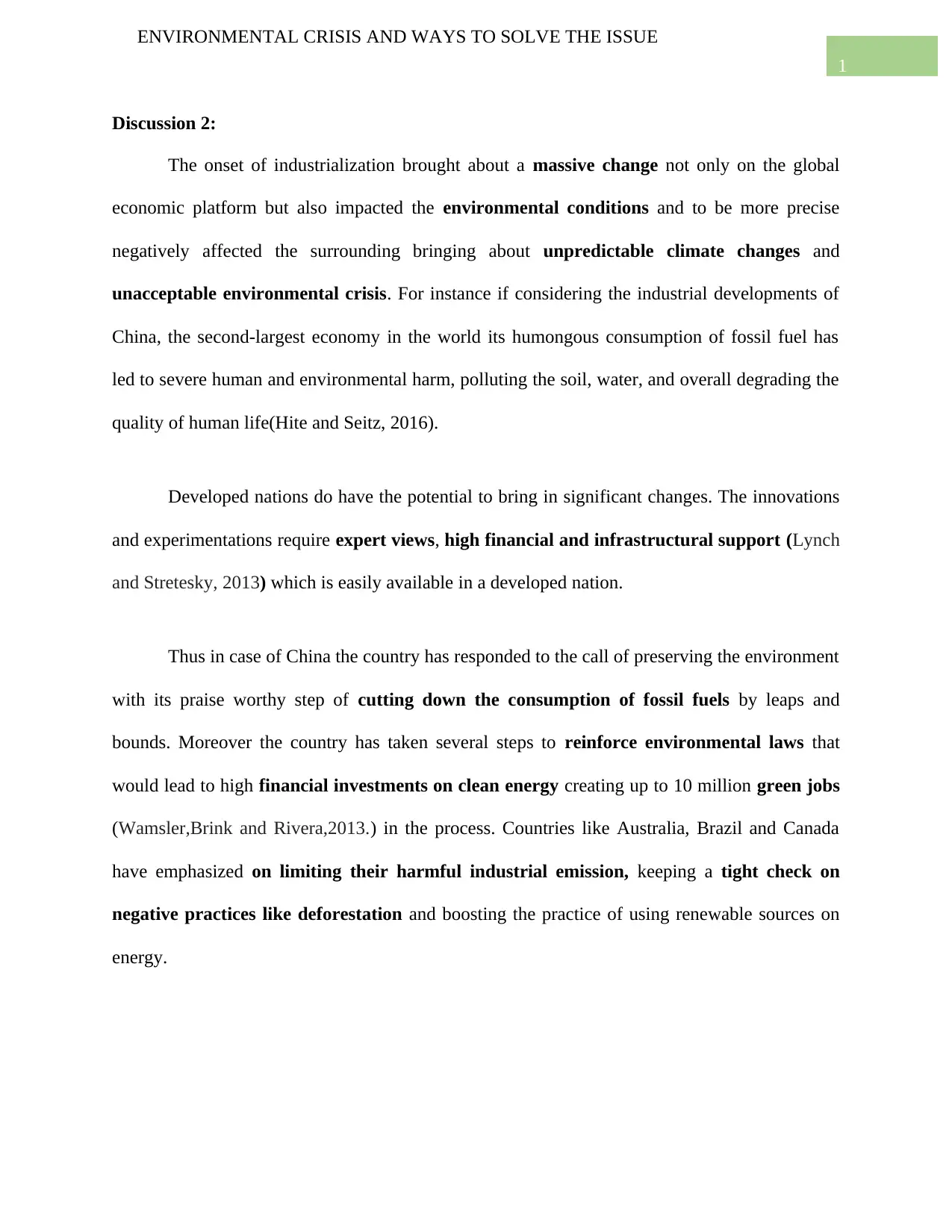
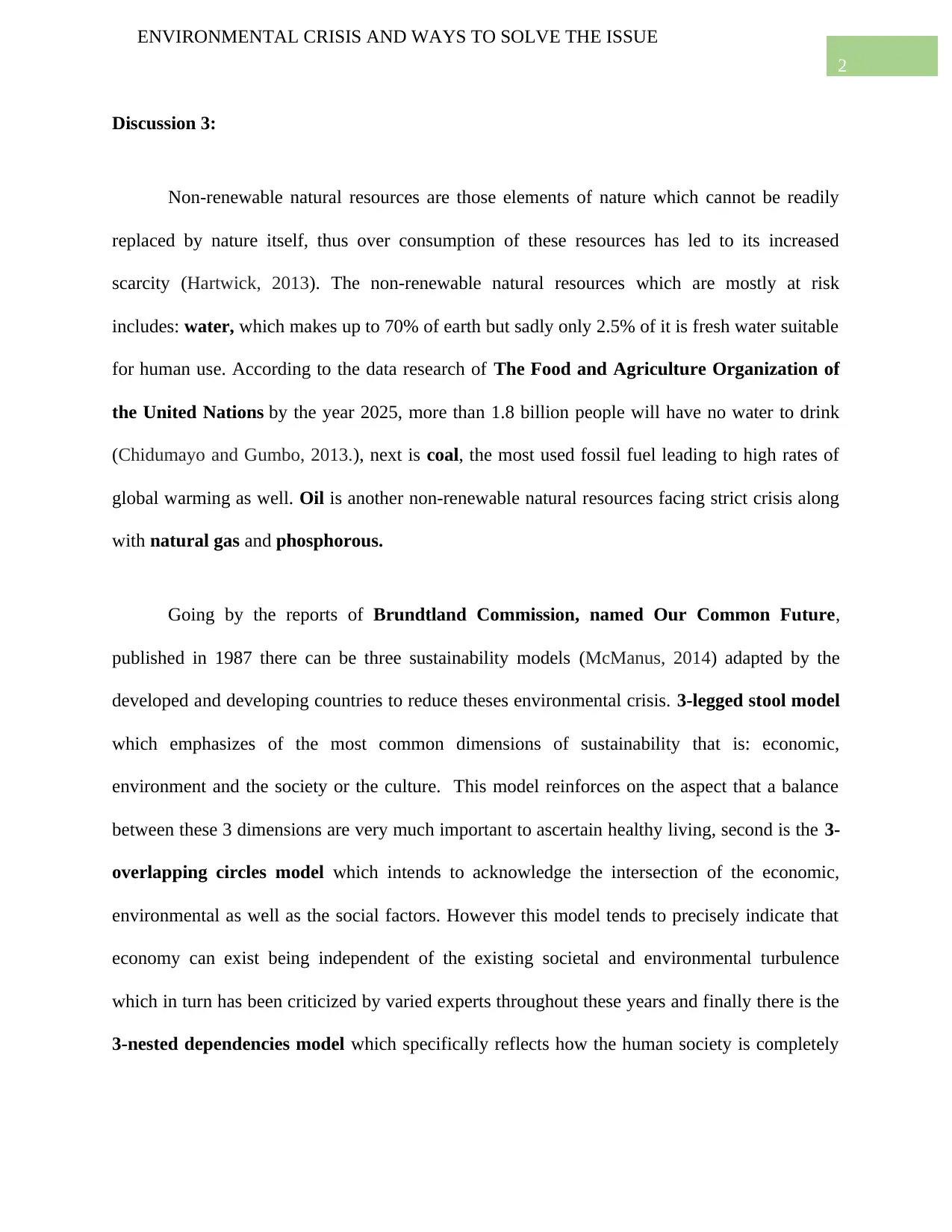

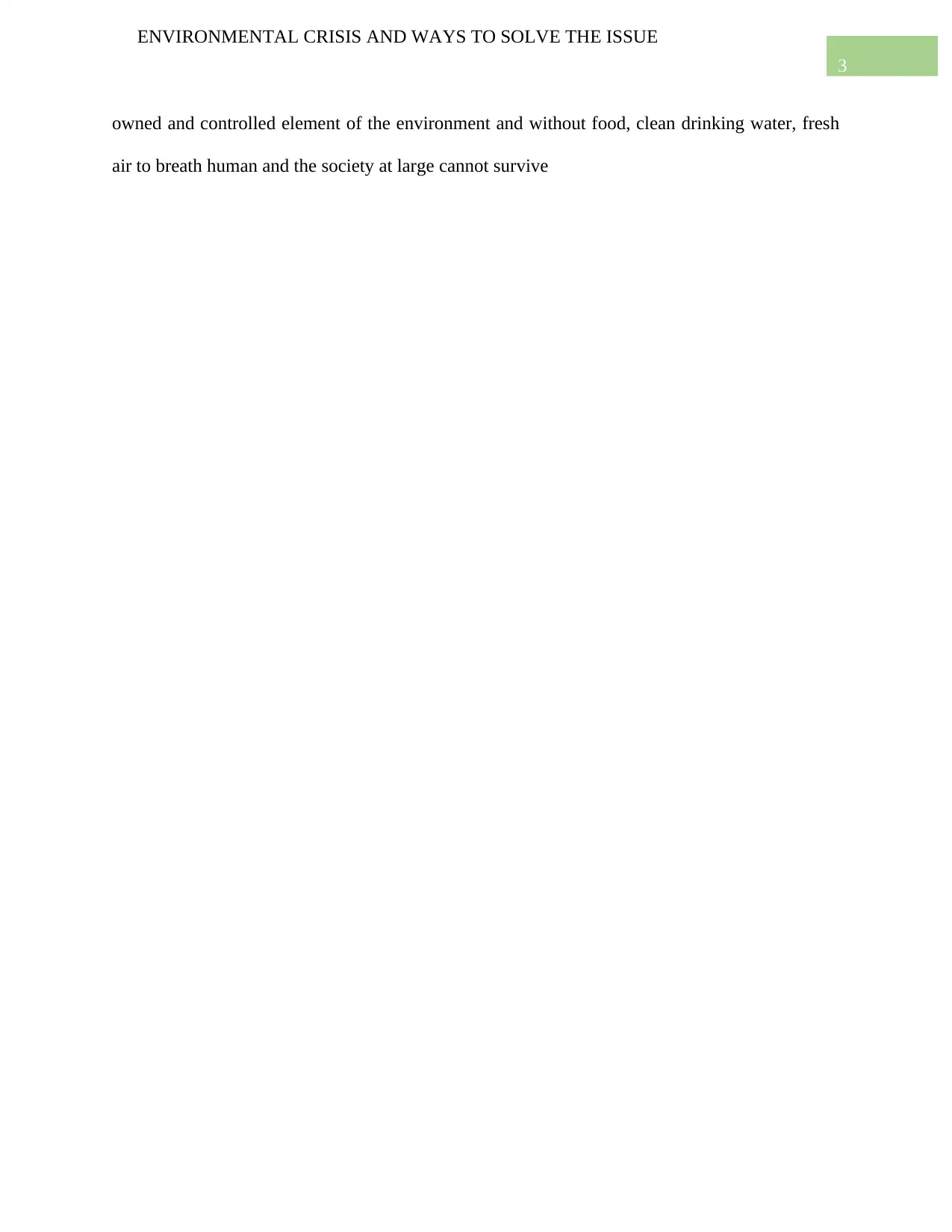
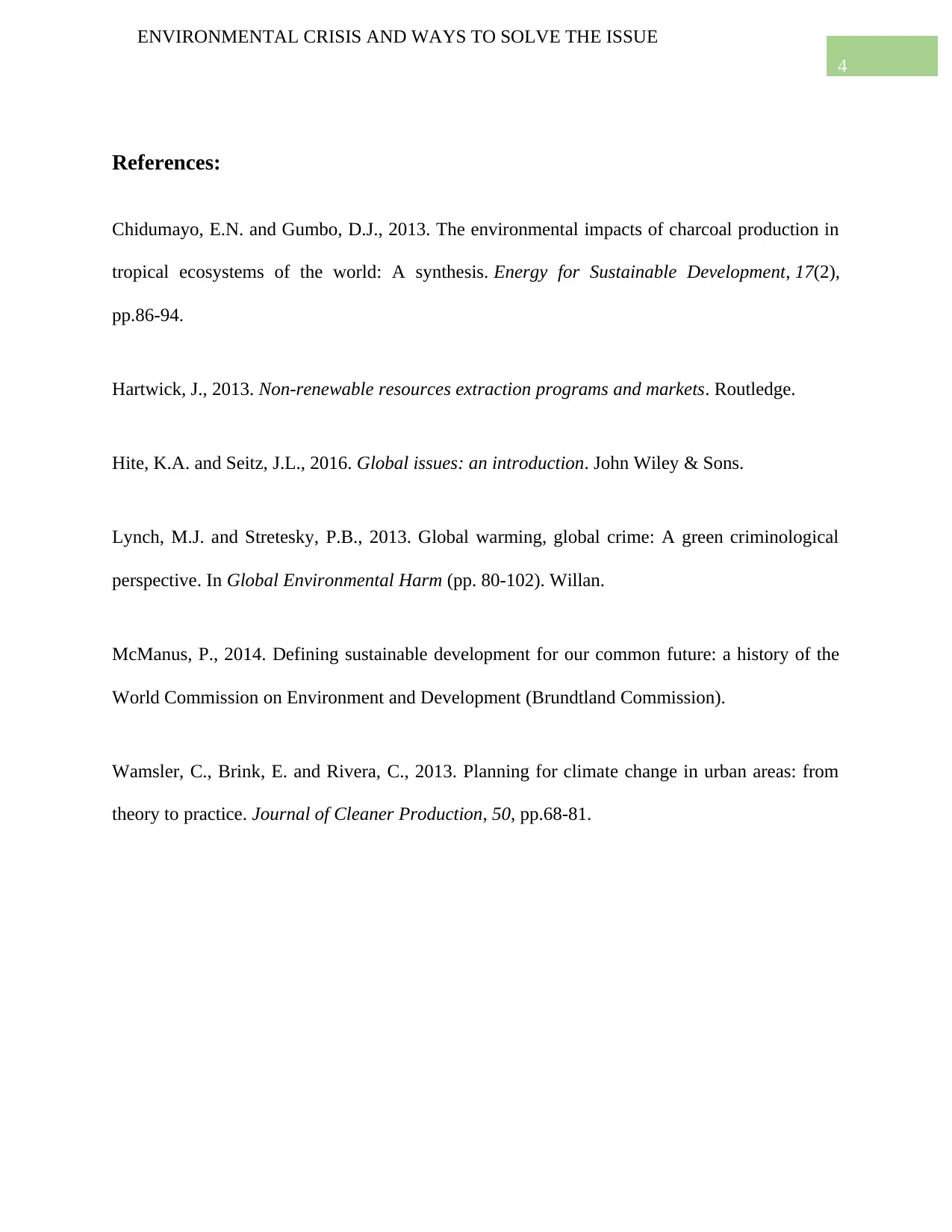

![Report on Solutions to Global Issues: Energy Use - [Course Name]](/_next/image/?url=https%3A%2F%2Fdesklib.com%2Fmedia%2Fimages%2Fiq%2F68676eb4df9840fcacdc201ca9f7c6e0.jpg&w=256&q=75)




![[object Object]](/_next/static/media/star-bottom.7253800d.svg)